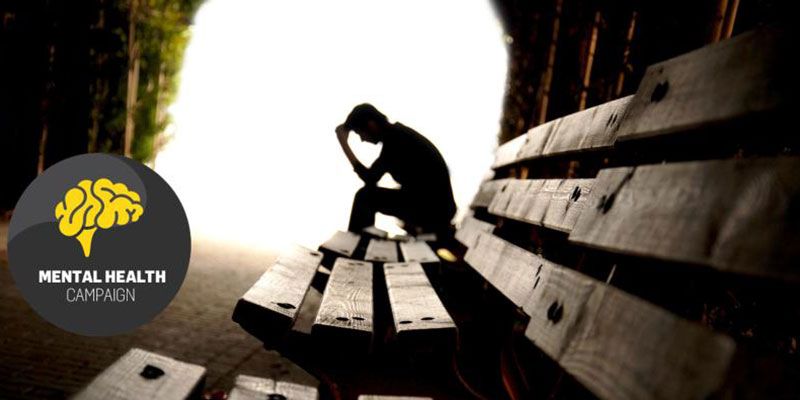What are the signs of depression, a disorder affecting so many today?
Affecting 350 million people worldwide, depression symptoms range from lasting feelings of unhappiness and hopelessness to losing interest in the things one used to enjoy.
All of us experience episodes of feeling blue or low as a normal part of life. However, consistently feeling sad, the experience of negative rumination, and lack of energy isn’t something normal. If someone persistently feels sad, empty and irritable, which is affecting their daily activities, it could be a sign of depression.

Depression is a mood disorder affecting 350 million people worldwide according to the WHO. The symptoms range from lasting feelings of unhappiness and hopelessness to losing interest in the things you used to enjoy.
Here are the symptoms:
- Depressed mood all the time nearly every day
- Diminished interest or pleasure in almost all activities
- Significant weight loss when not dieting, or weight gain or decrease/increase in appetite
- Insomnia or hypersomnia
- Psychomotor agitation or retardation
- Fatigue or loss of energy
- Feelings of worthlessness or excessive, inappropriate guilt (which may be delusional)
- Diminished ability to think, concentrate or indecisiveness,
- Recurrent thoughts of death (not just fear of dying), suicidal ideations without a specific plan, a suicide attempt or a specific plan for committing suicide
These symptoms can cause clinically significant distress or impairment in social, occupational, or other important areas of functioning. The episodes are not attributable to the physiological effects of a substance or to another medical condition.
If the above-mentioned symptoms last for more than two weeks, it can be diagnosed as depression and needs professionals help.
Types of depression
- Major depressive disorder - The most common type of depression is a major depressive disorder. It occurs when the symptoms interfere with one’s social, occupational and other areas of functioning. The symptoms of MDD are extreme sadness, hopelessness, lack of energy and interest in everything. There may be changes in sleeping and eating habits, feeling of worthlessness, thoughts of death or suicide persistent for at least two weeks straight.
- Dysthymia - The essential feature of persistent depressive disorder (dysthymia) is a depressed mood that occurs for most of the days, for at least two years or at least one year for children and adolescents. Individuals with persistent depressive disorder describe their mood as sad or "down in the dumps." This type of depression has fewer or milder symptoms than major depression, and also lasts longer than major depression. Symptoms include sadness, trouble concentrating, fatigue, and changes in sleep habits and appetite.
- Premenstrual Dysphoric Disorder - The main features of premenstrual dysphoric disorder are mood swings, irritability, dysphoria, and anxiety symptoms. They occur repeatedly during the premenstrual phase of the cycle. It is a cyclical condition in which women feel sad and irritable for one or two weeks before their menstrual period each month. It is a depressive disorder caused due to the changes in chemicals of the brain and hormones of the body during ovulation in a woman.
- Postpartum depression - In this type of depression mothers experience depression symptoms after giving birth. This can occur anywhere from weeks to months after childbirth. Some of the symptoms are extreme sadness, fatigue, loneliness, hopelessness, suicidal thoughts, fear of hurting the baby, and feelings of disconnect from the child. Postpartum depression must be distinguished from baby blues, which affects most mothers post pregnancy. It is caused by changes in the chemical nature of the brain and body (reduced levels of estrogen and progesterone), due to pregnancy and delivery.
- Seasonal affective depression - This type of depression affects people during particular times or seasons of the year. During the months of winter, individuals feel depressed and lethargic. But during the rest of the months, their moods may be stable. This sets in during winter and is associated with a lack of sunlight.
- Atypical depression - This condition is different than the persistent sadness of typical depression. A positive event can temporarily change one’s mood. Symptoms of atypical depression include:
- Increased appetite
- Hypersomnia
- Feeling of heaviness in your arms and legs
- Oversensitive to criticism
People with this type of depression may also put on weight, be irritable, and have relationship issues.

- Psychotic depression - This type of depression is paired with some form of psychosis, such as delusions (false beliefs) and hallucinations (seeing or hearing things that aren’t present). People show symptoms of depression along with psychotic symptoms.
- Situational depression - This type of depression is triggered by a stressful event, for example death of loved ones, divorce, job loss, or a trauma. The symptoms might clear up over time once the event has ended. If they don’t, then it could be the warning signs of major depression. Situational depression stems from not being able to cope with the changes that have occurred. Once the person is able to come to terms with the new situation she/he will be able to get through this.
One thing to keep in mind: The intensity of symptoms and the number of symptoms vary among people. If you notice any of the signs feel free to reach out to counsellors. Depression can be treated with psychotherapy, medication or a combination of the two. There is no one-size-fits-all solution to treat depression. It might take awhile to get over this but there can be an end to it.
Do not restrain yourself from seeking help if there is a need.











